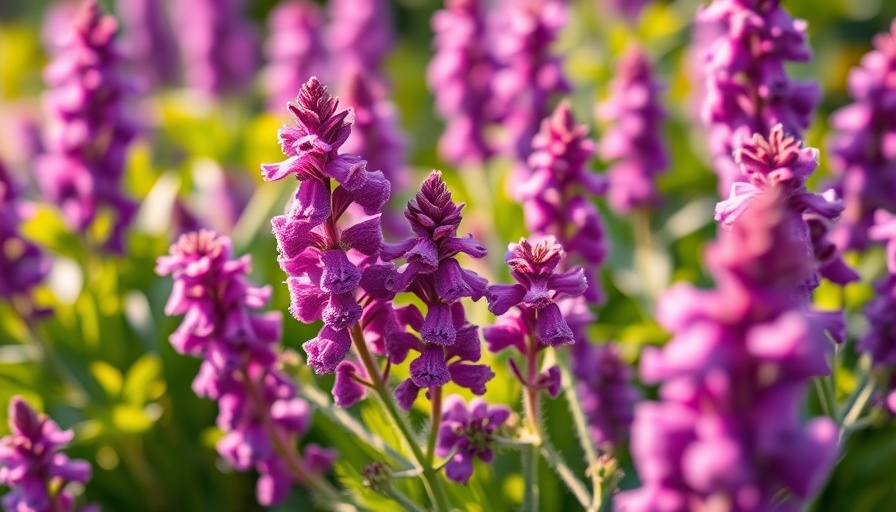
Understanding Invasive Plants: A Threat to Your Garden
Creating a vibrant and blooming garden requires careful selection of plants, but not all lush options you find at your local garden store are beneficial. Many species may look picturesque, yet they harbor the potential to become invasive and wreak havoc on your carefully curated outdoor space. These plants can spread aggressively, outcompeting your favorite flowers and even wreaking havoc on local ecosystems.
Meet the Garden Villains: The Most Common Invasive Plants
As every budding gardener knows, knowledge is power. Awareness of the invasive plants most commonly sold at garden centers is crucial for maintaining a healthy garden. Here are some of the biggest culprits:
1. Bamboo: The Fast-Growing Monster
Bamboo may appear charming, but its aggressive nature is a gardener's nightmare. Known for its underground rhizomes, bamboo can spread rapidly, with some variants growing up to three feet in one day! This can lead to densely packed thickets that smother other plants and potentially cause structural damage as it invades patios and fences. If bamboo is irresistible, opt for clumping varieties and ensure you install barriers to keep its rampant growth under control. Invasive yet astonishingly beautiful, bamboo requires a gardener’s respect and forethought.
2. English Ivy: The Silent Strangler
While English ivy can add a touch of elegance to your landscape, it has a darker side. Its climbing capabilities allow it to cling to trees and structures, overwhelming and eventually suffocating them by blocking light and adding undue weight. Gardeners are often taken by surprise when their intended ground cover becomes an aggressive takeover artist. It can grow over 90 feet long, posing a significant threat to your garden’s health. Instead, look for native alternatives that offer beauty without the invasive tendencies.
3. Kudzu: The Rampant Invader
Characterized by its vigorous growth and vibrant green leaves, kudzu is often labeled 'the vine that ate the South.' Originally introduced in the U.S. to control soil erosion, this invasive weed grows up to a foot daily and can cover 100 feet in just one growing season, smothering everything in its path. It’s critical to seek out native species that can thrive in your area without overwhelming local flora.
4. Loosestrife: The Silent Overwhelming Hero
Though beautiful with its bright yellow spikes, loosestrife can outcompete native wetland plants, drastically altering local ecosystems. This plant clogs waterways and adds to flooding by making landscapes more resistant to water absorption. Homeowners should consider alternatives that enhance their garden's beauty without the risk of invasion.
5. Wisteria: A Deceptively Lovely Threat
Wisteria is often sought for its cascading blooms, but its robust growth habits can cause structural havoc on trellises, arbours, and other installations. Its voracious roots can even damage foundations and pathways. If you're enchanted by its beauty, consider training varieties that are known for being less invasive or choose native climbing plants.
Protecting Your Garden: Tips for Prevention
Understanding invasive plants is just the first step. Here are essential practices homeowners can adopt to protect their gardens:
- Research Before You Purchase: Always identify plants native to your area before making a selection. Native species not only thrive in local conditions but provide habitats for local wildlife.
- Seek Expert Advice: Consult local horticulturists or agricultural extension services. They can guide you toward plants that enhance your landscape without the invasive risks.
- Remove Invasive Species Early: At the onset of growth, invasive plants are easier to manage. Consistent monitoring is key.
Final Thoughts: Choosing Wisely for Your Outdoor Haven
Gardening should be a rewarding experience, an opportunity to create beauty and serenity. However, the incorporation of invasive plants threatens this dream. As you plan your next garden project, strive for selections that embellish your outdoor spaces while respecting the native ecosystems that surround you. Careful planning and knowledge of alternatives will ensure that your garden remains a sanctuary for both plants and local wildlife.
By choosing wisely and engaging in sustainable practices, you not only benefit as a gardener but contribute positively to your environment. The next time you visit a garden center, let this knowledge steer your selections toward healthier, native options. Together, we can cultivate beautiful gardens without compromising the balance of our ecosystems.
Call to Action: Ready to transform your garden the right way? Explore native plant options at your local nursery today and ensure a sustainable future for your landscape!
 Add Row
Add Row  Add
Add 




Write A Comment